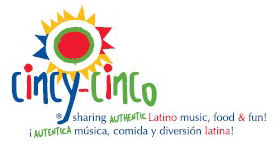 |
||
The History of the Piñata |
||
Home
Founders
Club
Festival Info
Things to Do
Largest
Pinata
Directions
Photo
Albums
Sponsors
Be a Sponsor
Sponsors
Other
Participating Orgs
Vendors & Exhibitors
Be
a Vendor
Volunteers
Be
a Volunteer
Latino Charities
Grant Request Information
Cinco de Mayo History
Pinata History
About Us
Contact Us
![]()
The History of the Piñata
World's Largest Pinata - We Attempt a World Record
The origin of the piñata is thought to date back
 over
700 years ago to
over
700 years ago to
When the custom passed into
 The
custom then spread to
The
custom then spread to
At the beginning of the 16th century the Spanish
missionaries to
The missionaries ingeniously transformed these games for religious instruction. They covered the traditional pot with colored paper, giving it an extraordinary, perhaps fearful appearance.
The original & traditional piñata
h as
seven points symbolizing the seven deadly sins: envy, sloth, gluttony,
greed, lust, anger/wrath, and pride. The ten pointed piñata
symbolizes the sins that come from breaking the Ten Commandments.
as
seven points symbolizing the seven deadly sins: envy, sloth, gluttony,
greed, lust, anger/wrath, and pride. The ten pointed piñata
symbolizes the sins that come from breaking the Ten Commandments.
The stick which is used to break the pinata represents and symbolizes love. It is supposed to destroy the sins by hitting and breaking the pinata into pieces. The candies and treats that come pouring out from the broken piñata symbolize the forgiveness of sins and a new beginning.
As we come together to celebrate Cincy-Cinco, we honor a tradition that is over 700 years old. And we add a new chapter by making the world’s largest piñata.
| |
Home
| About
Us
| Festival
Info
| Directions
|
Contact
Us | Contact the Webmaster ---© Copyright 2006. All rights reserved Cincy Cinco. WebHosting by Lida Ray Technologies |